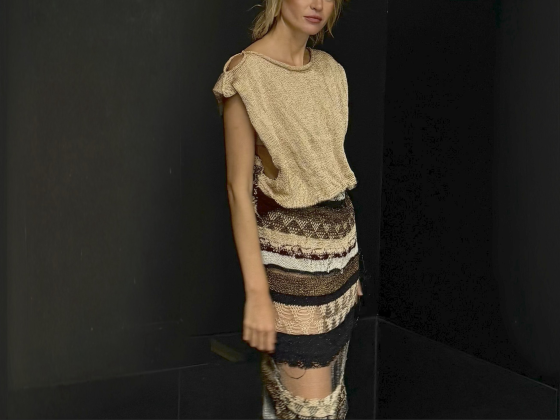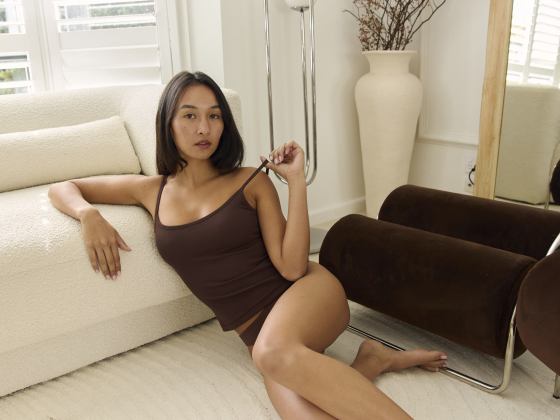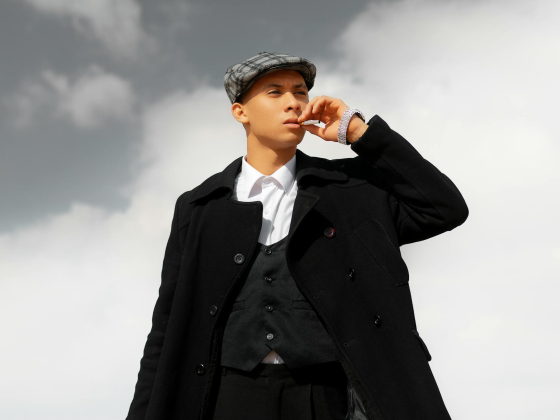British designer Phoebe English’s work is suffused with an ethical intentionality that’s been acknowledged and awarded by her peers and her 2025 collection “Cloud Cover” which showed as part of London Fashion Weeks fortieth anniversary season was further testament to those values and that vision.
Acutely aware of the environmental cost of overconsumption “Cloud Cover” was made using reused, reclaimed and recycled materials. Phoebe’s innate sense of innovation also saw her use the plant Ragwort, which while mildly poisonous is also hugely beneficial to the insect world, to dye the collections silks. Transparency is the benchmark of sustainability and Phoebe English’s work carries a traceability that allows us to see where the materials and fabrics have come from and that environmentally ethical standards have been met.
Conveyed in a predominately black and white palette the collection saw ethereal and elegant pieces featuring heart shaped cut outs, deliciously draped silk panels and double hems juxtaposed with more understated designs. All were beautifully crafted and imbued with the designer’s exquisite trademark tailoring. These cool, covetable creations were presented to us by an array of wonderfully diverse models who illustrated that the designer’s ethical ethos extends beyond the future of our planet to also embrace those humans currently inhabiting it.
Flanelle spoke to Phoebe during London Fashion Week to ask about this latest collection, how her work in the sustainability space has been recognized both in and beyond the fashion industry and her aspirations for the future.
Text by Brian James
Photos by Asia Werbel
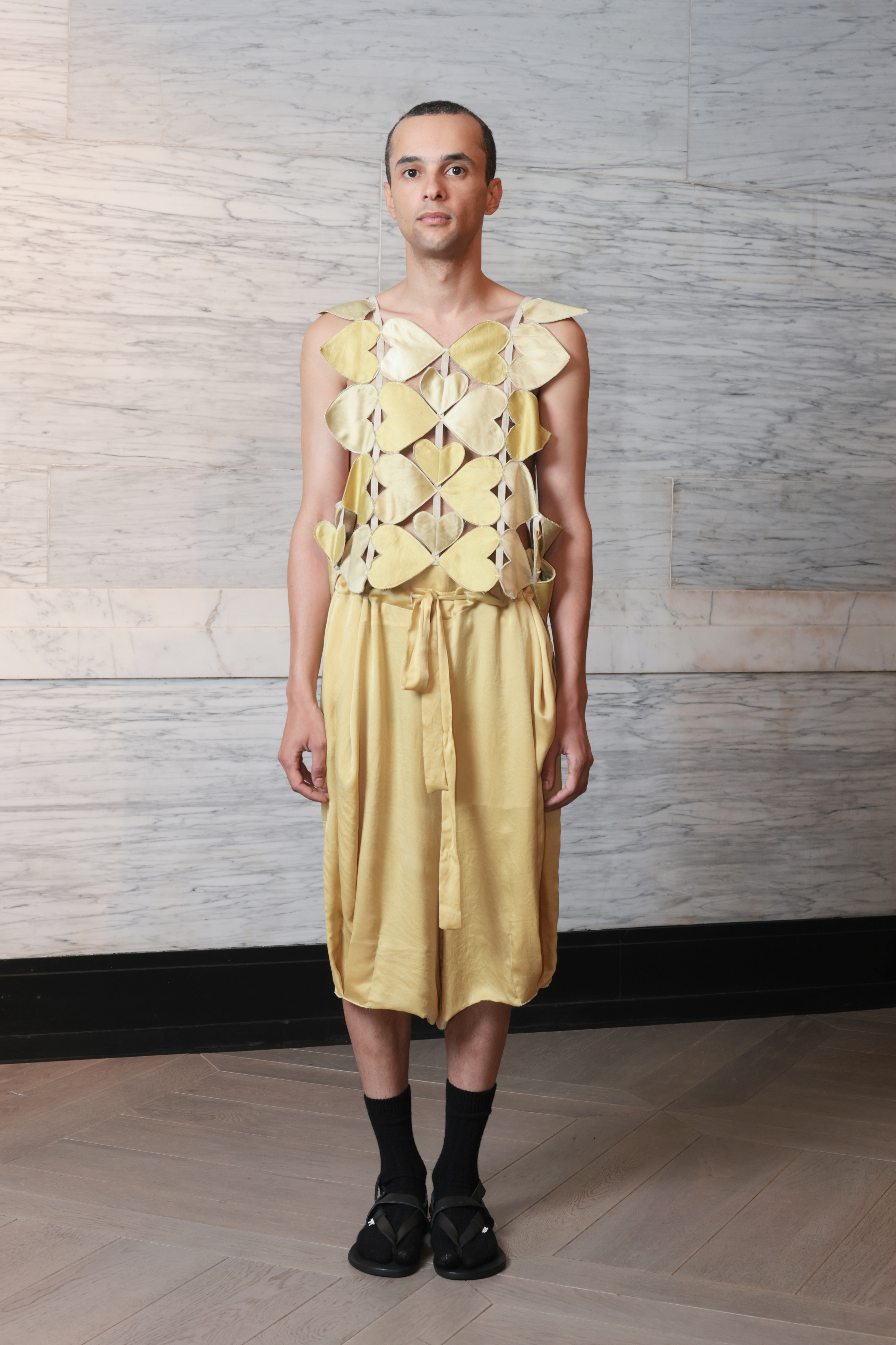

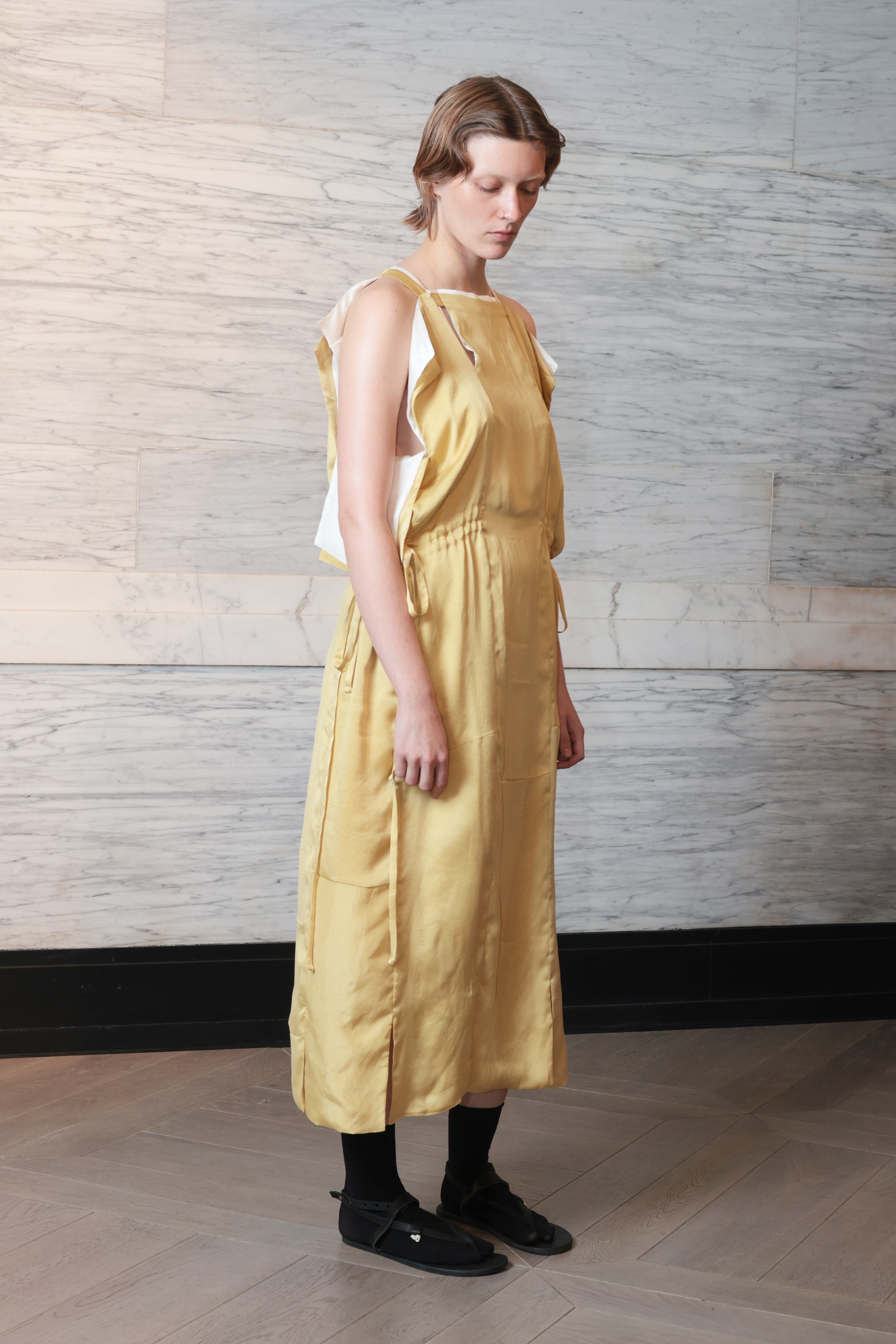
Congratulations on your latest collection which has just shown at London Fashion Week. What inspired and influenced this latest body of work?
We work in response to what textile waste streams we can get our hands on so that’s what mainly influences each collection. This season we have used several different silks from our bridal network which work well together, creating slight creamy mottled hues. We have also found a new plant to naturally dye with which is always exciting for our team, working with the plant Ragwort – commonly considered a weed but excellent for pollinators.
We love that it features signature Phoebe English silhouettes and shapes while also displaying your continued evolution as a designer. How important is it to retain that brand identity and recognition factor, while continuing to evolve creatively ?
Thank you, we hope that each season we do is a gentle evolution of the previous one. We took the heart shields from last season and developed that motif even further, so now they enshroud the whole body.
You follow a circular sustainable approach that’s been acknowledged and awarded by your peers. Can you tell us about the sustainable practices you followed with this collection?
This collection is made entirely from reclaimed, scraps, off cuts and left over materials. We have used the plant Ragwort to dye the silks lots of different shades of a smokey chartreuse. Ragwort is considered a weed and poisonous to horses, yet is a food source to many pollinators. When processed with the right recipe, which we have explored and tested, we are able to extract the beautiful smokey chartreuse hue on a variety of different waste silks.
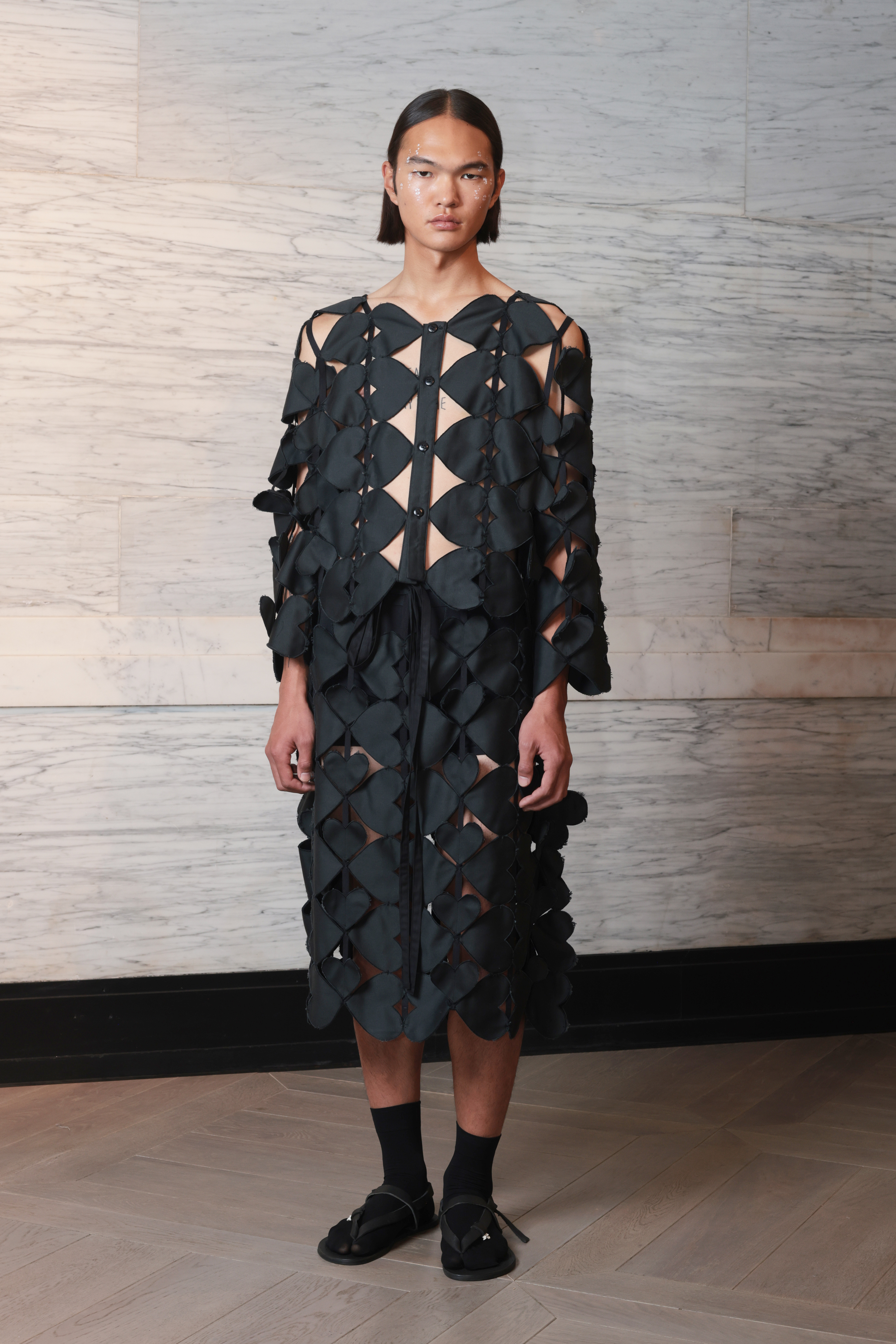



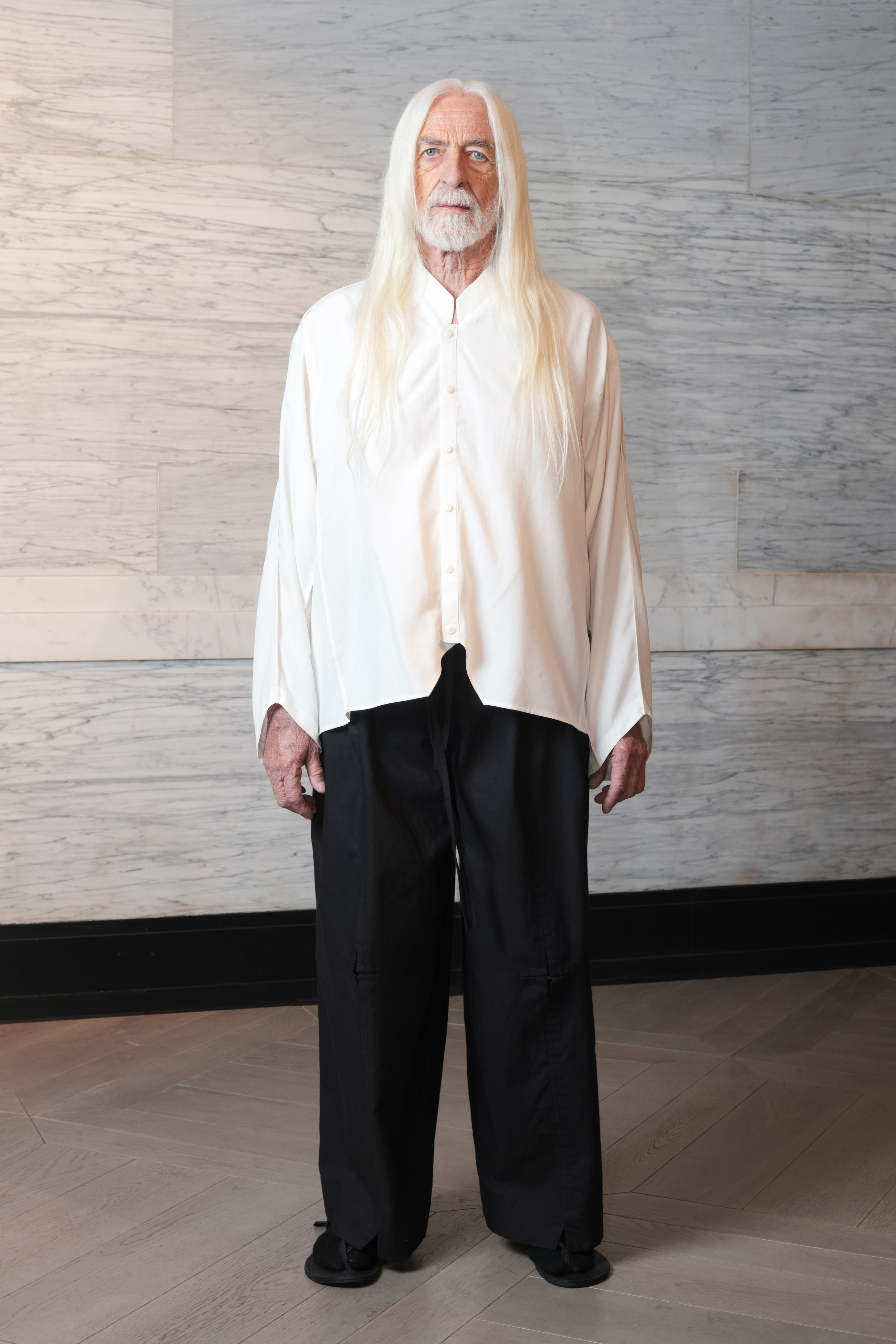

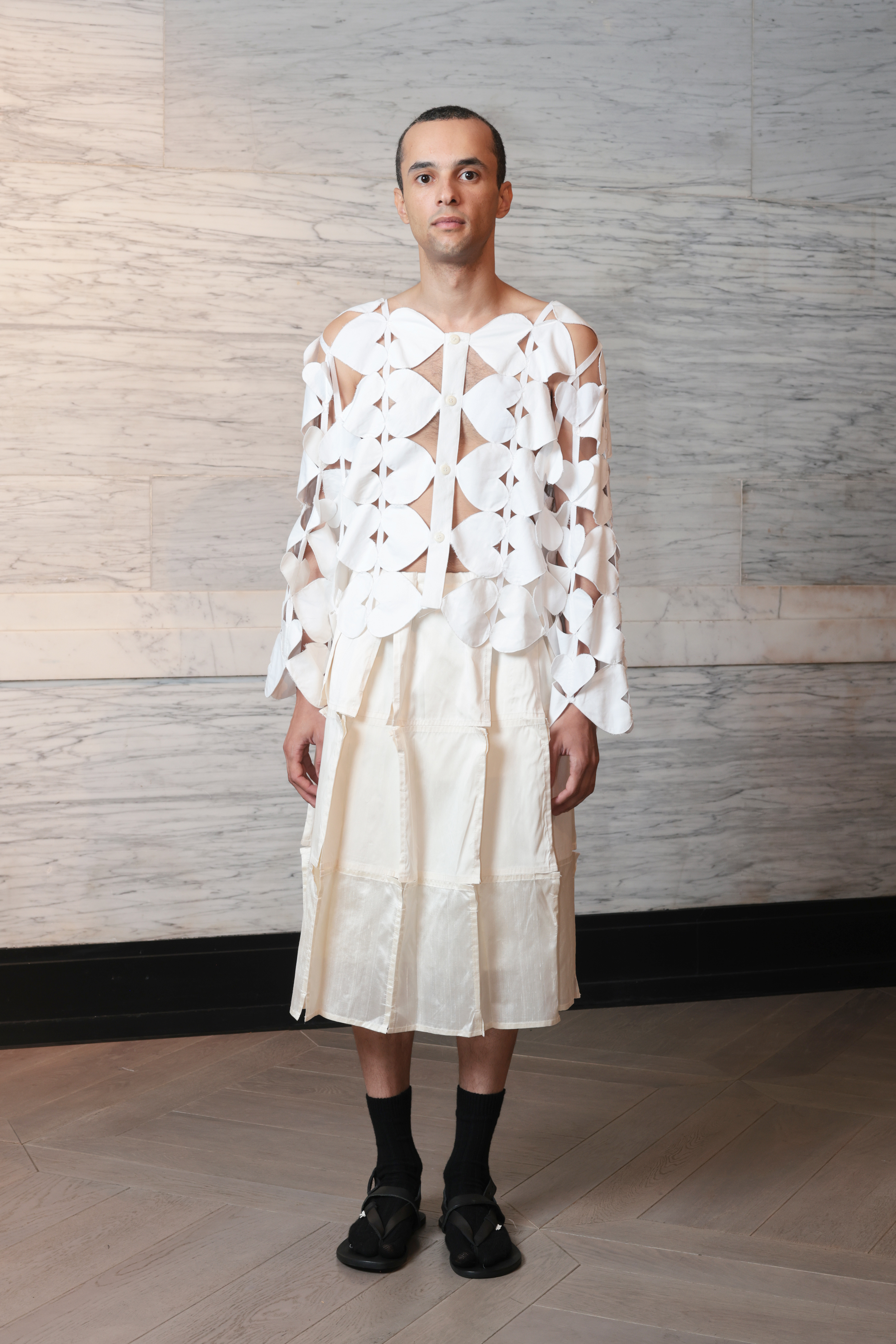
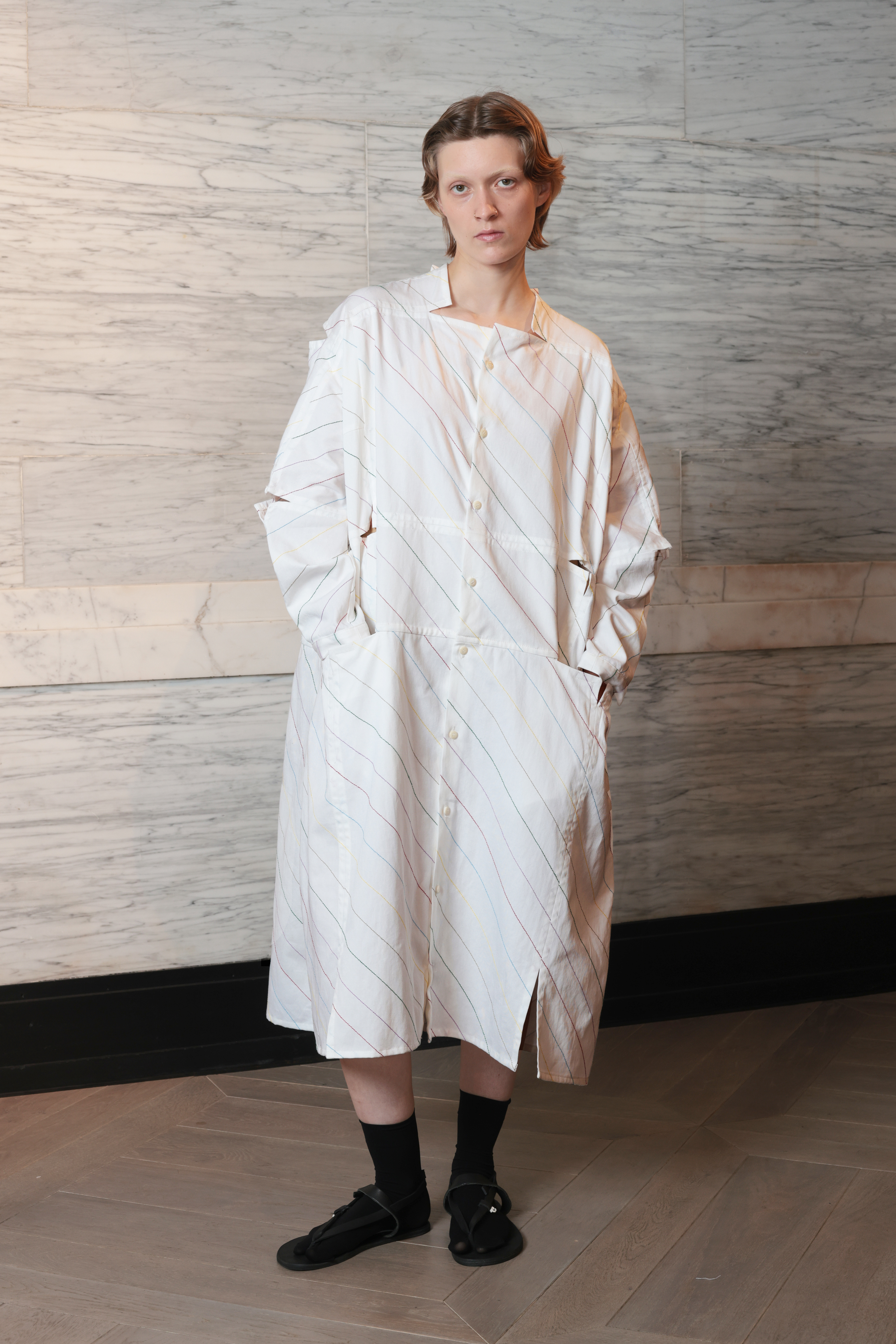
Where do you source the waste materials and natural materials that you use to make your clothes and how do you monitor the integrity of your supply chains?
We are sourcing our waste materials from a variety of different companies who are also working towards less waste, for example we work with a network of bridal companies sourcing their off cuts and small bits of fabrics that they can’t use, we also work with digital print companies using their test lengths of fabric and then over dye them to obscure the print. We basically use the act of making the collection as a way to use up other people’s textile ‘waste,’ using our design as a way to imagine a new life for fabrics that would have otherwise gone into the bin or been left without use.
You studied at Central St Martins under the renowned Professor Loiuse Wilson who also taught designers such as Alexander McQueen and Charles Jeffrey. In what ways did her teaching and the CSM experience inspire you and prepare you for a career in fashion?
Louise was a fantastic teacher, she cared so much about each student’s individual learning and progress, she was a huge champion of emerging young talent. I feel very lucky to have been taught by her. You can still see her influence in the work of so many designers she taught today, including myself.
Sustainability wasn’t really part of the fashion curriculum or mainstream conversation when you founded the brand in 2011. What were the circumstances that made you follow this path and is it something that evolved over time?
I guess it was a number of things really, nature has always been very important to me as a person and I guess I’m now learning how I could integrate that into my design work. The climate emergency has rapidly worsened since I started the brand, it’s important to respond as designers and as citizens to the times we live in.
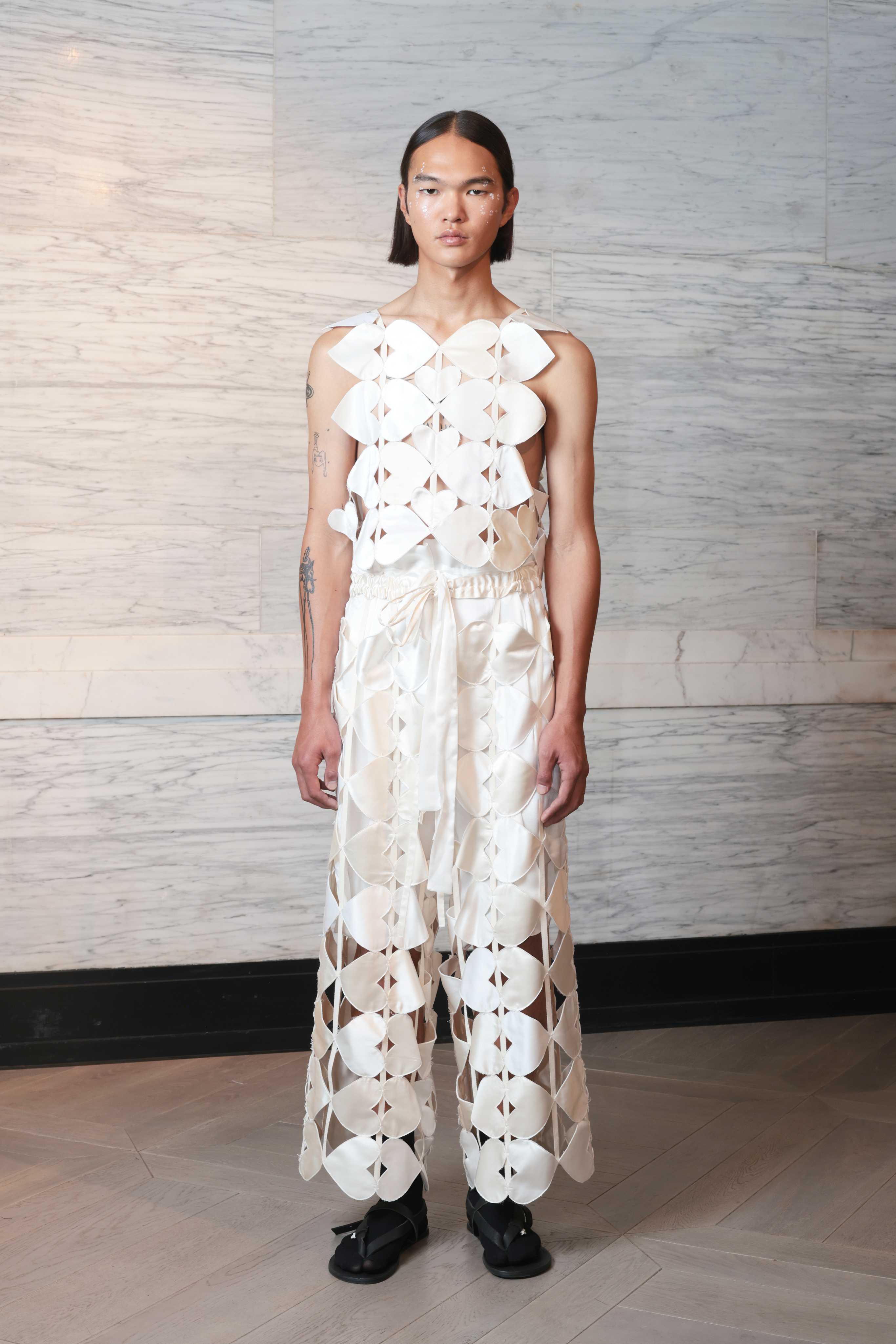
Are there any challenges in following that sustainable approach and also being financially sustainable and how do you navigate them?
Yes, that is a challenge for all small businesses. Working in this way means we can’t make at a very large scale, which is traditionally how fashion businesses make money – making one thing multiple times at a large scale. So we have to think beyond only making things alone and work in different areas also such as education, research etc.
What do you think the key is to your longevity in an often-transitory industry where many brands fail to survive beyond a couple of seasons?
Ah interesting question, I’m not entirely sure, I guess I have always lent into being small and have resisted temptation to appear to the outside as a big operation – I’ve never done huge collections to keep up with other brands for example. I like being small, it helps to keep things personal and hopefully authentic.
That longevity has brought with it an extensive archive and some of those pieces were put on sale by you during the summer. How satisfying was it reintroducing or in some cases possibly introducing these pieces to the Phoebe English audience and what was the reaction?
Yes it was a year of a lot of change for us, we moved our studio after many years and that was very exposing to what we had accumulated and what we had. It was a huge amount of work but it was also very cathartic to know exactly what we have and why. It was great to pass on those pieces to others who might be able to enjoy them.
Last years “Memory Shapes” collection saw you collaborating with U.K heritage outerwear brand Lavenham while earlier this year you worked with the brand Toast and their charity partner Traid on a capsule collection. Is it important to you to work with like-minded brands and what are the benefits in partnering with them?
It’s always really enlightening learning how other companies and brands work. It’s so inspiring to make links and partnerships with as many people as possible – that opportunity to learn from one another is very precious and the best way to move forwards with design.
A dress from “Memory Shapes” and one from an earlier collection were on display at New York’s Metropolitan Museum of Art and the National Museums of Scotland respectively. In what ways do you hope those platforms promoted your message and what was it like having your work on display in such esteemed institutions?
It’s been such an amazing experience to have a piece of ours now part of that esteemed collection. It means a lot to me that it’s there and also to have it featured in such an incredible exhibition. What’s really exciting is that it’s the research behind the development of that piece that was of interest to them and not the design alone. It was featured in a section focused on historical uses of the dye plant Weld – how totally amazing to display the use of that single plant but used through time, our piece was displayed alongside examples of that colour used in clothes from the 17th century, which I think is absolutely amazing! A colour that’s so strong it can last all that time!
As we move forward from London Fashion Week what are your plans and aspirations for the remainder of the year and into 2025?
We’ve got some exciting creative projects coming our way and we are going to be featured in some new exhibitions in 2025.
Many thanks to Phoebe for speaking to Flanelle and to Crimson for all her help.




